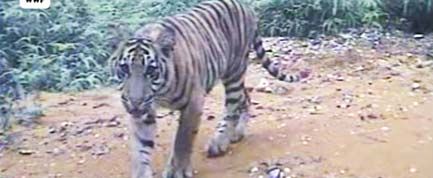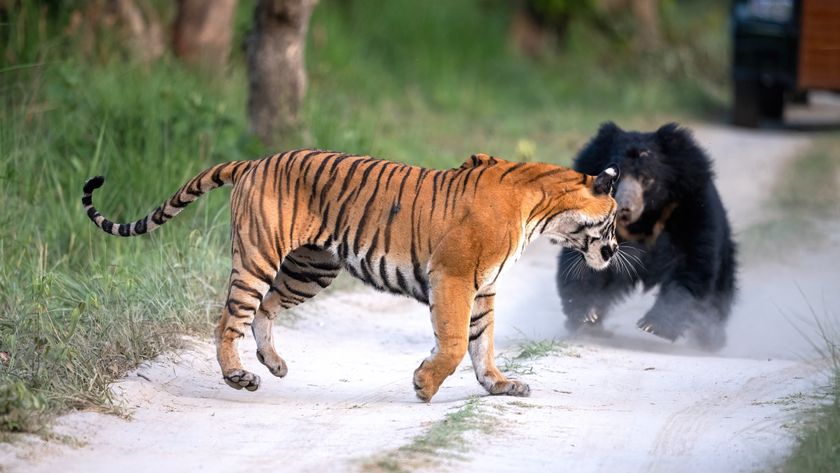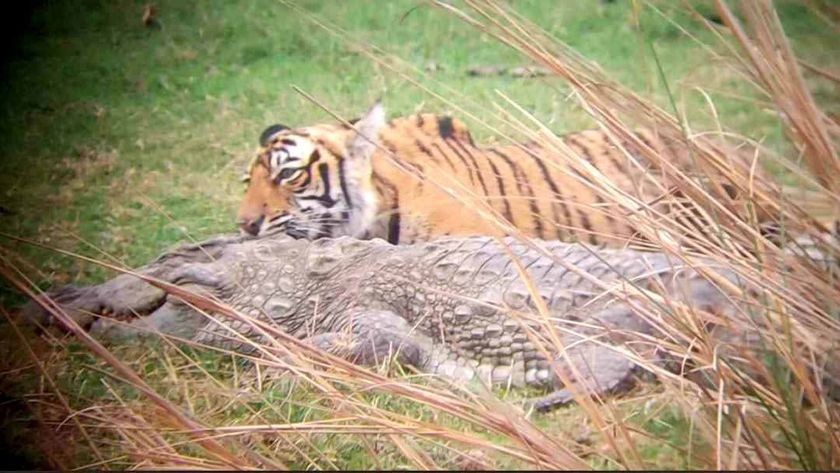Rare Wild Tiger and Cubs Captured on Video

A female tiger and her cubs gave scientists quite a show as the elusive animals sniffed and checked out a video-camera trap in the Sumatran jungle.
After five years of studying tigers using wildlife-activated camera traps set up in the forest, these are the first images of the rare tiger with cubs. The video will provide a window into the elusive tiger's behavior, say scientists with the WWF (formerly called the World Wildlife Fund).
As few as 400 Sumatran tigers remain in the wild, and even these individuals are under relentless pressure from poaching and clearing of their habitat, officials say.
"We are very concerned though, because the territory of this tigress and its cubs is being rapidly cleared by two global paper companies, palm oil plantations, encroachers, and illegal loggers," said Karmila Parakkasi, the leader of WWF-Indonesia's Sumatran tiger research team.
Parakkasi and her team first captured still images of the tigress and its cub in July 2009 through still camera traps. The photos were, however, not very clear, and the research team was not sure how many cubs there were. And so they set up four of the video camera traps in known tiger routes in a forested wildlife corridor that allows animals to move between two protected areas in central Sumatra — Rimbang Baling Wildlife Reserve in Riau and Bukit Tigapuluh National Park in both Riau and Jambi provinces.
The video comes as WWF prepares to launch a campaign for tiger conservation on Feb. 14 to coincide with the start of the Year of the Tiger on the Chinese calendar.
"We want to change the course of tiger conservation," said Mike Baltzer, leader of WWF's global Tiger Initiative. "It's not just about saving the tiger from extinction, but about doubling their number by 2022." Hence, the campaign is called "Tx2: Double or Nothing."
Sign up for the Live Science daily newsletter now
Get the world’s most fascinating discoveries delivered straight to your inbox.
WWF scientists are worried about the cubs' future. "When these cubs are old enough to leave their mother, which will be soon, they will have to find their own territory," said Ian Kosasih, WWF-Indonesia'' Forest Program Director. "Where will they go? As tiger habitat shrunk with so much of the surrounding area having been cleared, the tigers will have a very hard time avoiding encounters with people. That will then be very dangerous for everyone involved."
Kosasih says with this new evidence of Sumatran tigers, WWF is calling for a formal establishment of a protected area between Rimbang Baling and Bukit Tigapuluh forests. WWF is also urging the paper companies operating in the area as well as palm oil plantations to help protect all high conservation value forests under their control that provide habitat for tigers and other endangered species.
- Video: Tiger Mom and Cubs in Sumatran Jungle
- Top 10 Species Success Stories
- World's Deadliest Animals












